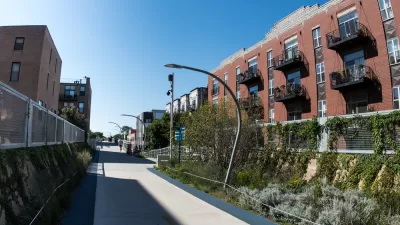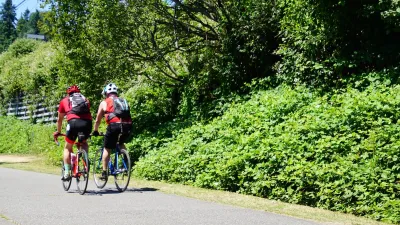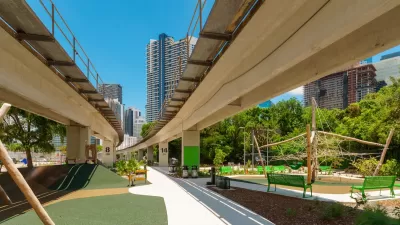The Root River Trail has fallen short of the "economic savior" status some were hoping from it, but it has also exceeded expectations in some towns along the route.
"The impacts of the Root River Trail System on the communities along it resemble the paved path itself: turns that veer one way, then another," reports Mike Cronin.
"During the summer of 2009, the path generated about $2.3 million from those who used it, the [2010 Department of Natural Resources] report [pdf] said. While overall use of the trail since the mid-1990s has declined 38 percent — to about 112,000 user hours in 2009 from roughly 179,000 in 1997, according to the report – homegrown residents such as Nethercutt’s newest legal colleague, Greg Schieber, are riding it more often."
The impact of the trail on the local economy is of special consequence because it used state dollars for funding back in the early-1980s (and on an extension in the 1990s) and cuts through productive agricultural land.
The article goes on to highlight some of the attractions along the trail, such as the Aroma Pie Shop in Whalan (a town with less than 70 residents), the Houston Nature Center, and Amish country, among others.
FULL STORY: How has the Root River Trail System affected hamlets along its path?

Trump Administration Could Effectively End Housing Voucher Program
Federal officials are eyeing major cuts to the Section 8 program that helps millions of low-income households pay rent.

Planetizen Federal Action Tracker
A weekly monitor of how Trump’s orders and actions are impacting planners and planning in America.

Ken Jennings Launches Transit Web Series
The Jeopardy champ wants you to ride public transit.

Crime Continues to Drop on Philly, San Francisco Transit Systems
SEPTA and BART both saw significant declines in violent crime in the first quarter of 2025.

How South LA Green Spaces Power Community Health and Hope
Green spaces like South L.A. Wetlands Park are helping South Los Angeles residents promote healthy lifestyles, build community, and advocate for improvements that reflect local needs in historically underserved neighborhoods.

Sacramento Plans ‘Quick-Build’ Road Safety Projects
The city wants to accelerate small-scale safety improvements that use low-cost equipment to make an impact at dangerous intersections.
Urban Design for Planners 1: Software Tools
This six-course series explores essential urban design concepts using open source software and equips planners with the tools they need to participate fully in the urban design process.
Planning for Universal Design
Learn the tools for implementing Universal Design in planning regulations.
Heyer Gruel & Associates PA
Ada County Highway District
Institute for Housing and Urban Development Studies (IHS)
City of Grandview
Harvard GSD Executive Education
Toledo-Lucas County Plan Commissions
Salt Lake City
NYU Wagner Graduate School of Public Service





























